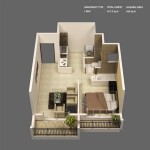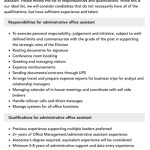How Do Interior Designers Get Paid?
The world of interior design is alluring, filled with creative possibilities and aesthetic transformations. But behind the glamorous facade lies a complex business structure, with various compensation models employed by interior designers. Understanding these models is crucial for both those seeking design services and those aspiring to become interior designers.
1. Hourly Rates: A Transparent Approach
One of the most common payment methods for interior designers is the hourly rate. This model offers transparency and allows clients to track expenses closely. Interior designers working on an hourly basis typically charge based on their experience, expertise, and the complexity of the project. Clients appreciate the predictability of this model, as they know exactly how much they'll be paying for each hour of work.
However, using hourly rates can be less suitable for projects with fixed budgets. The scope of work might not be clear from the outset, leading to potential cost overruns. It's essential for both parties to outline the project scope and expected hours clearly to avoid any ambiguity.
2. Flat Fees: Fixed Price for Defined Services
Another popular method is the flat fee, which involves charging a fixed price for a specific service. This model is particularly suitable for well-defined projects with a clear scope of work, such as designing a single room or creating a complete design concept. Clients appreciate the certainty of a fixed price, allowing for easier budgeting.
However, flat fees can present challenges when the project scope changes. If unforeseen circumstances arise, additional work might be required, leading to potential disputes over compensation. Clear contracts outlining the scope of work and any potential for adjustments are critical to ensure a smooth experience.
3. Percentage-Based Fees: A Share of the Project Value
For larger projects, interior designers may opt for a percentage-based fee, charging a predetermined percentage of the project's total cost. This method can be beneficial for both parties, as the designer's compensation is directly tied to the project's value. It also incentivizes the designer to ensure the project's success as their earnings are dependent on its completion.
However, this model can be less transparent for clients, who might not be fully aware of the specifics of the design fees. It's essential to have clear communication and detailed breakdowns of the fees involved to avoid misunderstandings.
4. Retainer Fees: Securing Expertise for Ongoing Projects
Retainer fees are often employed for ongoing projects or long-term collaborations. This model involves clients paying a fixed amount upfront to secure the designer's time and expertise for a specific period. Retainers allow for ongoing design support, consultation, and project management.
This method is particularly beneficial for clients seeking continuous guidance and assistance in their design journey. However, the upfront cost might be a barrier for some clients, and the scope of services provided should be clearly outlined in the retainer agreement.
5. Cost Plus Fee: Transparent Project Management
The cost-plus fee method involves the designer charging a fixed fee for their services, plus the actual cost of materials, labor, and other project-related expenses. This approach provides transparency and accountability, allowing clients to understand the breakdown of project costs. It's particularly suitable for complex projects with variable expenses.
While offering a fair and transparent method, cost-plus contracts require diligent tracking of expenses by the designer and careful monitoring by the client. This model demands strong communication to ensure both parties agree on the costs incurred.
Beyond Fees: Additional Compensation Sources
In addition to the primary fee structures, interior designers might also generate income from other sources, such as:
- Commissions: Earning commissions from suppliers or vendors for recommending specific products or services.
- Product Sales: Selling their own designed furniture, accessories, or home decor items.
- Workshops and Courses: Providing design-related workshops, seminars, or online courses to share their expertise.
- Consulting Services: Offering specialized design consulting services for specific areas, such as color palettes or lighting design.
Navigating the world of interior design compensation requires a deep understanding of the different payment models and their implications. By carefully evaluating the options, clients and designers can establish clear agreements that ensure a successful and rewarding design journey, fostering a collaborative and transparent partnership.
What S The Fastest Way To Make Money As An Interior Designer Designed

How Much Does An Interior Designer Get Paid Style Your Decor

5 Ways Hiring An Interior Designer Can Save You Money Hk Interiors

How To Make Money As An Interior Designer Multiple Revenue Streams Of

2025 Understanding How Interior Designers Get Paid Archova Visuals

2025 Payment Schedules When Do Interior Designers Get Paid Archova Visuals

How To Become An Interior Designer Ici

Interior Designer Salary Neit

How Much Does An Interior Designer Cost

How Much Does An Interior Designer Make Breaking Down Salaries Tips On To Earn More Money
Related Posts








